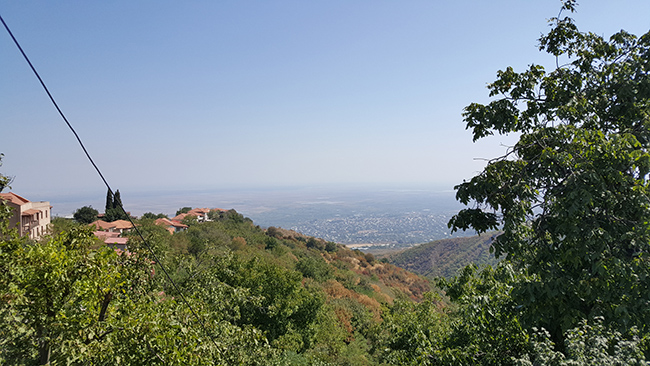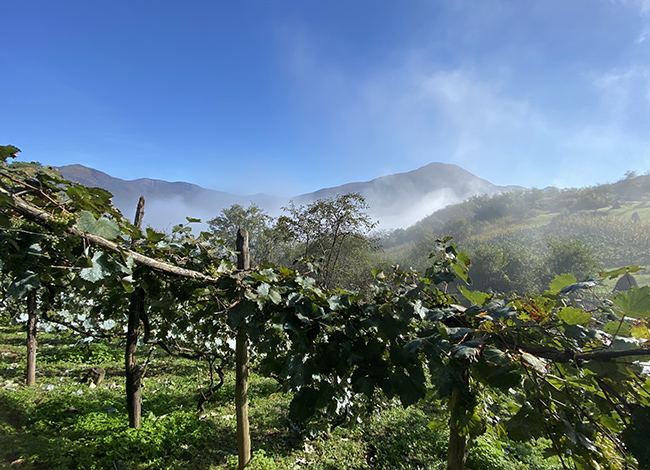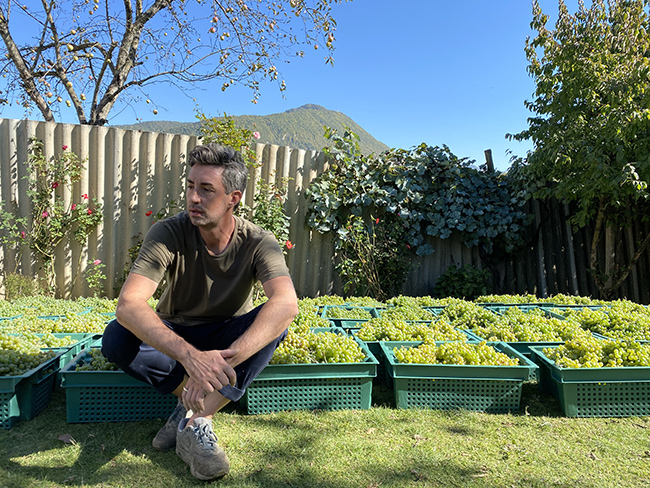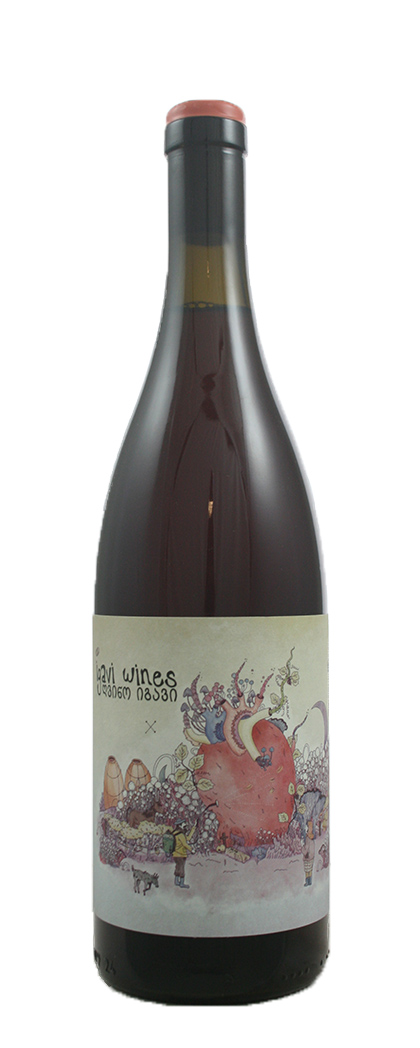It is a truth universally acknowledged that we’ve had a love affair with Georgia for the past few years, and over a decade ago became one of the first companies to seriously focus on importing wines from artisan growers to sell into restaurants and bars. Georgia itself is now firmly on everyone’s wine map – its growers invariably attend the Real Wine Fair, RAW, and various French, Italian and Scandinavian natural fairs in force, organise their own fairs—Zero Compromise – being one such—and are increasingly represented far and wide throughout the natural wine world by excellent wine importers. Wine tourism is a thing in Georgia, as people from within and outwith the wine trade, make the pilgrimage to this Caucasus country to experience the fierce hospitality, the unique gastronomy, and, of course, the very special wines.
Georgia is not the easiest country to extract wine from due to the difficulties of co-ordinating grouped shipments and the sheer expense of transportation. Wines from the previous vintage are bottled in August or September, and, as growers don’t want to be sitting on stock, we normally have to take everything in one fell swoop. Finally, the wines we work with are all natural; they usually need a period of time to recover from their long voyage.
We have now received our annual shipment and have a wide and varied selection of wines at our disposal and for your pleasure.
Herewith a summary of what’s new and grooving:
Eastern Georgia ~ Kakheti & Kartli
Pheasant’s Tears was founded in 2007 a joint project between John Wurdeman and Gela Patalishvili, set up to revive the ancient traditions of Georgian winemaking. The vineyards and the winery with its wonderful restaurant The Crazy Pomegranate is located in Tibaani near the historic UNESCO village of Sighnaghi, and this project also gathers grapes from other vineyards in Kakheti, as well as Karti, Imereti and wild Adjara in the south-west of the country.
After an absence of a couple of years from our list, the golden Kisi returns with its distinctive aromas redolent of dried apricot, citrus flowers and Earl Grey tea. New to the fold is a Danakharuli Goruli Mtsvane blend from a vineyard in Mukhrani in Karti. This wine is made from a 50/50 blend of the rare red variety ‘Danakharuli’ and the aromatic white Goruli Mtsvane variety. Aged in Qvevri for 9 months, this light and playful red has stunning rose petal aromas with an earthy layer on the palate.
Of the two Rkatsitelis, the one from Tibaani is the lighter style, whereas the Bakurtsikhe iteration, from Gelas’ grandfather’s 100-year-old vineyard has longer maceration and greater concentration. There are two Mtsvanes, one from the village of Bodbishkhvevi, the other from the home Tibaani vineyard.
The Saperavi is classically inky, but no tannic tusk-stainer. Care of destemming and part carbonic maceration, the wine is brimming with delicious blackberry fruit. The new vintage of Chkhaveri from a beautiful vineyard on red clay soils with granite in Adjara in the south west of Georgia reveals the sheer prettiness of the grape. The delicate red undergoes only one week with fermentation in stainless steel.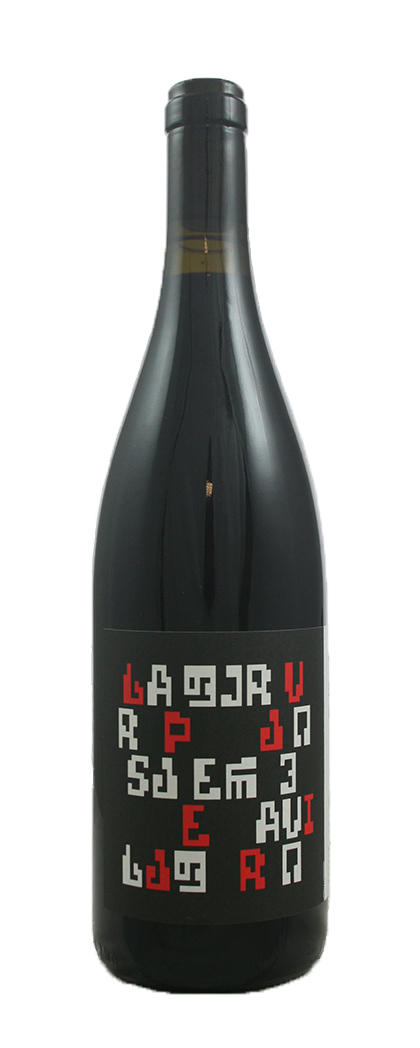
Finally, we have the newest iteration of Madlieri, a blend of five different Kartlian varieties – Chinuri, Goruli Mtsavane, Danakharuli, Shavkapito and Tavkveri. Five-day maceration followed by co-fermentation of red and white grapes and ageing in stainless tanks, make this a Georgian red very much about the fruit. Ripe red currants, damsons and violets to the fore with some earthiness, energetic acidity and those fine-grained tannins. The inclusion of white grapes gives a delicate floral component to the wine.
The philosophy of Pheasant’s Tear is best summarised by its co-founder. John Wurdeman.
Pheasant’s Tears was born out of a love of authentic tradition, and culture and endless creativity. It is more than a winery, it’s about songs, cuisine, art, heritage, tangible and intangible. For wine is born out of a confluence of the spirit of a place, its geology, its history, and the emotions of the vintner himself. In the end, a dialogue between nature and man, a fine tension between respect for the past and creating a new experience for tomorrow. Traditions here are seen as the nourishing soul for improvisation and respectful evolution.
John “Jonny “Okro is John Wurdeman’s friend and neighbour in the picturesque village of Sighnaghi. He brings a scientific approach to natural winemaking. His Zvari Rkatisteli is back in stock. This is our house Rkat, being amber with dried fruit and earl grey tea flavours. Back as well is the Saperavi Budeshuri, phenomenally purple wine bursting with hedgerow fruits, the liquid embodiment of Seamus Heaney’s poem “Blackberry Picking.”
We have been buying Iago Bitarishvili’s wines since the 2010 vintage. He has always worked organically in his small vineyard in Chardahki and been passionate about preserving the local traditions, never being even slightly seduced by newfangled techniques.
Iago works with only one variety – the light-skinned and late-ripening Chinuri – although he makes two versions of it; one with skin contact and one without. The skinny one is gently crushed before the whole bunches are surrendered to the clay and remain there for six months or so to accrue colour, body and tannin.
Nothing is rushed here. Iago’s skin-contact white is left to nestle in the earth for around ten months before bottling although it is transferred from one qvevri to another during that time. With a strong yeast population, the ambient fermentation will proceed healthily, and Iago will break the cap to allow the gases to escape. The malolactic proceeds naturally once the qvevri have been topped up and towards the end of the year the jars are sealed wherein a large flint stone or a piece of glass and is then further sealed with wet clay and covered in damp sand. Chinuri is distinctive with its naturally high acidity. Layered aromatics of green pears, bay, almond and lemon give way to a delicacy on the palate that defies expectation. Gorgeous balance of acidity and tannin.
Marina Kurtanidze, Iago’s wife, also makes wine here under the label “Marina’s Wine.” Years ago, we fell in love with her fabled Mtsvane. Unfortunately, that has not been produced, but we still have her Tavkveri/Chinuri, which can be a light red or rose depending on the mood you are in. It’s delicious, packed with raspberries and peppered strawberry fruit flavours.
Iago Bitarishvili, Kartli
2022 Chinuri Skin Contact
2022 Pet Nat
Mariam Kurtanidze, Kartli
2022 Tavkveri Chinuri blend
Pheasant’s Tears, Kakheti
2021 Danakharuli Goruli Mtsvane – NEW
2022 Kisi
2022 Mtsvane Manavi
2022 Mtsvane Bodbishkhvevi – NEW
2022 Rkatsiteli Tibaani
2022 Rkatsiteli Bakurtsikhe
2021 Madlieri red – NEW BLEND
2022 Chkhaveri red
2021 Saperavi
Okro’s Wines, Kakheti
2021 Zvari Rkatsiteli
2021 Saperavi Budeshuri
Western Georgia ~ Imereti, Lechkhumi & Guria
Nikoladzeebis Marani was founded in 2007 by Ramaz Nikoladze on the base of his ancestors’ vineyard and typical Imeretian cellar in Nakhshirgele. There are two white Georgian grape varieties planted in the vineyard; Tsitska and Tsolikouri. Natural winemaking methods are used in both the cellars and the vineyards. His 0.7ha of vines are between 28-100 years old. The grapes are fermented and aged in quevri, more often than not without their skins or pomace, although Ramaz plays this by ear each year. This Tsolikouri Orkhvi is actually from grapes sourced from a family member’s limestone-rich vineyard in Lechkhumi, which are directly pressed and fermented for 18-day with indigenous yeasts in qvevri. The wine spends around 5-6 months in this vessel, before being racked into clean qvevri until it needs to be bottled. Really fresh with good citrus flavours and bright acidity. His own vineyard Tsolikouri grapes are used to make his wine called Solikouri, an intense yet wonderfully elegant and nourishing amber wine, a homage to his mentor Soliko (hence the play on words). We sometimes call this a reverse Tsolikouri. The aforementioned (no-skin) Tsitska also comes from the vineyard by Ramaz’s house. It is lovely expression of this grape, all pineapple and melon.
It is a truth universally acknowledged that we’ve had a love affair with Georgia for the past few years, and over a decade ago became one of the first companies to seriously focus on importing wines from artisan growers to sell into restaurants and bars
Back in stock also is Didimi’s Krakhuna, one of the more fragrant Georgian whites, made without skin contact, fermented and aged in glass demi-johns for six months before bottling. Almost limey and zesty in its youth, this wine develops à la Riesling. Didimi comes from the village of Dimi in Imereti, where there is a rich heritage of winemaking.
The Archil Guniava Wine Cellar is located in Kvaliti Village, at the family home, where generations of the family have lived. Vines are planted on steep slopes across 1.5 hectares of vineyards. This location provides excellent soil structure and a conducive climate for grapes. The vineyard plot is planted to Tsolikouri; Tsitsk;, Krakhuna; Otskhanuri Sapere; Dzelshavi; Dondghlabi and Mgaloblishvili, the latter two being very rare and whose reputation Archil is dedicated to restoring. Everything is fermented in old qvevris buried in the marani (cellar). Natural winemaking methods are naturally employed with native ferments, and nothing added; normally the wines would be made Imeretian-style with approximately 15% maceration on skins.
The climate in this part of Imereti is subtropical, warm rather than hot, and quite humid in the summer. The soils are clay over limestone, this latter feature giving the wines their particular freshness and vitality. Organic farming methods are practised.
Grapes are harvested by hand, destemmed and crushed into the beeswax-lined qvevri. Ferments are ambient and take around two weeks to complete. All wines undergo natural malolactic fermentation and are bottled without filtration, fining or sulphur added.
We begin with the very rare Dondghlabi. Despite the fact that the grapes spend four months macerating on their skins (and nine months in qvevri in total), the resulting wine is still light-gold in colour and light on its feet with aromas of wild herbs and grapefruit. Archil remarks: “Dondghlabi is an old Imeretian variety of grape, very common 60-70 years ago, but now on the verge of extinction. My ancestors loved this wine so much that I decided to recover it. 2019’s Dondglabi is the first vintage for me. I only have 400 bottles of it. It is considered as one of the lightest wines. Skin contact is 100% for 4 months, but it’s still light, with different varietal aromas.”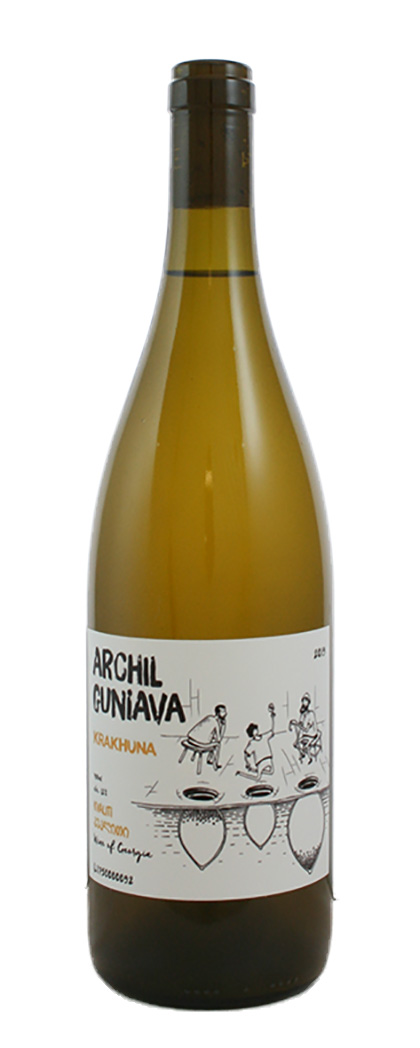
In a country overflowing with ancient grape varieties, Krakhuna is one of the oldest. And is happily easier to pronounce than many other Georgian grapes! Indigenous to Imereti in the west of the country, grown in and around the villages of Sviri, Obcha and Dimi, ‘Krakhuna’ means ‘crisp’ in the local dialect. It’s an appropriate nickname for this high-acid grape, which winemakers often describe as ‘crunchy’ in texture. Given the humid conditions of west Georgia, it can be challenging to grow with its naturally thin skins which make it susceptible to rot and mildew. As a consequence, Krakhuna produces only moderate yields, and the grapes must necessarily be harvested by hand and sorted. Krakhuna is often blended with Tsolikouri and Tsitska to make delicious white wines. Archil’s version offers notes of apricots, ripe citrus, vanilla with honeyed tones and lovely acidity to balance.
In upper and central Imereti, Tsitska is principally used to make sought after sparkling wines. Typical of the numerous indigenous grape varieties, Tsitska is confusingly known by several other names depending on where it is grown. If you come across Shanti or Tsitsko, you still have Tsitska. In the villages of central Imereti, it is also called Male Tsitska. In foreign ampelographical works (Viala and Vermoreli, Guioni, Piula and Goete), Tsitska is also mentioned and briefly described under the name Tsitska da Chanti.
Archil’s Tsitska-Tsolikouri-Krakhuna (60-20-20) is another wine that majors on freshness and purity of fruit. Citrus and fresh cut apple to the fore, background hints of dry honey and herbs.
Grape genealogy suggests Otskhanuri Sapere is a transitional variety between a cultivated and a wild vine. Grown throughout the Imereti region of western Georgia, Otskhanuri Sapere ripens in mid to late October. Like Saperavi, this is a teinturier grape, producing wines with a deep, opaque ruby colour. In their youth, the wines are grippy and structured with high tannins and acidity. Exhibiting flavours of forest fruits, red berries, and herbs, these wines have great aging potential. Otskhanuri Sapere is considered Imereti’s best red grape variety.
Archil used to try to make a wine using only the Otskhanuri Sapere. He discovered that (for him) the resulting wine was too strong, so now blends the Otskhanuri Sapere with Tsolikouri, with the proportion being 30/70. Firstly, he presses the Tsolikouri and adds it to a qvevri. Then, in November, he harvests the Otskhanuri Sapere, presses the grapes and adds the juice and chacha to the qvevri. According to Archil, even with the Tsolikouri fermented, it is not a problem to add the Otskhanuri Sapere. The maceration lasts for one month. To finish the wine, he continues to use the same winemaking process that he uses for the other qvevri wines. Even with the Tsolikouri making up the balance, this is a more structured wine with aromas and flavours of blackberry, cherry, dark berries.
Aidan Raftery first visited Georgia in 2017 and fell completely in love with the country, its people, culture, and of course, the wines, so much so that he decided to move there in 2019, purchasing a house and vineyard in Western Georgia in a small village called Zeindari.
His wine label is called Igavi which in Georgian means a fable or folk story. The name was inspired by a story he was told when he first visited Georgia which goes as follows: When young soldiers would go off to battle they would take a cutting from their family vineyard and tuck it under their armour next to their heart, so that if they were killed their family’s vine would grow from their dead body. This tale is illustrated by different artists for each cuvée, but each one is their individual interpretation of that story.
Imereti, where one of Aidan’s Tsolikouri vineyards is located (and his Aladusturi one), is a very diverse region in western Georgia with dramatically different climatic conditions in all the different sub-regions, but its hallmark is that it is subtropical; being warm and humid throughout. All his vineyards are farmed organically. Soils are turned in the spring, the rows between the vines are heavily (wild)grassed and mown twice – once in the middle of summer and once before harvest.
Tsolikouri Imereti is an equal parts blend of two iterations of this grape: Tsolikouri Melqo and Tsolikouri Bazaleti which are grown in a very sheltered site surrounded by forest on all sides and sitting in a small gully. The grapes in this case were manually harvested, whole-cluster, straight-pressed into 500-litre stainless steel tank and fermented with native yeasts before ageing nine months on full solids in the same tank (no racking) and the wine is bottled without filtration, fining or the addition of sulphur.
The two types of Tsolikouri are very different. Melqo when ripe is a deep burnished gold colour, while Bazaleti retains it blue green appearance even when ripe. The two are co-planted together, the Melqo component has much higher sugar than the Bazaleti, both are harvested when the two are in balance and harmony with one another. Light and bright in appearance with aromas of green pear, fresh quince, lime leaf, a little flesh in the mid-palate but tightened and lengthened by the acid drive.
The Aladasturi vineyard is on an exposed north-east facing site on a hill receiving sun throughout the day, it’s very windy at the same time giving great ripening potential with lower disease pressure. The soils here are sandy-clay with limestone, and the vines are 30-40 years old. Destemmed, whole-berries are macerated in plastic open fermenters of 1000 litres for ten days and undergo wild ferment before maturing for a further 9 months on full solids (no racking) in 530-litre qvevri.
A light nervy red with very fine and gentle tannins, perfumed, spicy, the whole gamut of red berries with white pepper and hints of iris. Not dissimilar in style to Pineau d’Aunis.
Aidan has produced two new light reds in the 2022 vintage. Firstly, Vanis Chkhaveri 100% from a site on a sheltered, gently undulating hill receiving all-day sun and co-planted with Tsolikouri Bazaleti. The grapes are destemmed and whole berries are macerated for five days and fermented in 500-litre open tanks, before maturing for eight months in 300-litre qvevri. Aidan describes this as “the most soil derived wine I produce, so taut and mineral.” This light red exhibits the whole gamut of red berries erring on the just-ripe spectrum with even some white strawberry character. Red wine for white wine lovers.
The other newbie is his Mgaloblishvili from Muri in Lechkhumi. The vineyard is 530 metres above sea level and the vines are no less than 120-years-old with their feet in loamy clay with limestone boulders. north-east facing. The grapes are whole bunch macerated for two weeks in open fermenters and matured in qvevri for nine months without racking. The wine is bottled without filtering, fining or sulphur added.
Mgaloblishvili, according to Aidan, when harvested at this ripeness has very little pigmentation development thus the pale copper/salmon hue, when the alcohol pushes to 12.5% plus the pigment begins to develop and so more classic ‘red wine’ colour spectrum happens à la Guniava for example.
The wine is pale copper/salmon with pink reflections despite the two weeks whole bunch maceration. Fluid through the front palate and tightening up at the back with a three dimensional tannin profile in play from properly lignified stems. Darjeeling tea, hibiscus flower and wild rosehips with a little VA pop on the nose.
An exposed sunny hill site in Leckkhumi provides near perfect growing conditions for Aidan’s Orbeluri Ojaleshi. The west-facing vineyard is 760 metres above sea level on clay-limestone soils.
One of Georgia’s oldest and noblest varieties, Ojaleshi, means “growing on a tree” in the Megrelian dialect of Georgian (ja=tree). It was the dominant variety in the mountainous district of Samegrelo in north-western Georgia, it was trained as a maghlari vine up persimmon or alder trees. Ojaleshi was widely cultivated in this manner throughout Guria’s central and upper mountain villages before the arrival of fungal diseases and phylloxera in the late 19th and early 20th centuries destroyed vineyards. Current plantings are trained lower to the ground, as in Guyot simple or double, which lowers yields but produces higher-quality fruit. Ojaleshi performs best on the limestone soils.
Destemmed whole-berries are macerated for 12 days in plastic open-top fermenters, ferment with indigenous yeasts, age without racking in 555-litre qvevri, and are bottled without filtration or fining and just 20 ppm of sulphites are added in the spring. This version certainly reflects the vintage being extremely delicate, weightless and gentle, very aromatic, with suggestions of blueberry with spent church incense, violet and gun smoke.
Zurab Topuridze has been involved in vineyard farming and making natural wines from childhood when he used to help his granddad. He was 13 years old when he made his first natural wine on his own. His winery is in the village of Dablatsikhe (English translation “Lower Castle”), which is located in Chokhatauri municipality of the Guria region. The Guria region is in the western part of Georgia, bordered by the Black Sea subtropical costal lowlands to the west and the mountains in the east. The region is rich in cultural traditions and natural beauty, famous for its polyphonic music, humorous people and used to be well known for its delicious rose-hued wines. When Zurab got married to Tamar, a native of Dablatsikhe, he bought a small house in the village and sufficient land for viticulture and started planting and reinstating the variety that his grandfather loved so much. This was Chkhaveri, a rare late ripening variety, native to Guria region, making rosé-style wines. He makes natural wines in underground qvevris with a total capacity of around 13 tonnes (22 terracotta vessels in total). The vineyard itself is four hectares, planted on the terraced slopes of River Supsa valley, on the reddish-brown clay over lime with lots of magnesium and iron in the soil.
The other part of Ibierili (the name of the winery) is located in the Teliani Valley in the foothills of the Gombori Range in Georgia’s eastern Kakheti region famous for its history of wine production and its fertile environment for winemaking. The winery overlooks the Alazani River Valley with the Caucasus Mountains to the north. Here they grow Rkatsiteli, Mtsvane, Khikhvi, Kisi, Mtsvivani and Saperavi. Although all the wines are macerated on skins, the proportion of juice to skins is relatively high and this makes for a much fresher, brighter style of amber wine. Even the Saperavi is a kind of western Georgian take on a Kakhetian classic. The grapes are straight crushed, and the juice is macerated on a few berries which are then removed after two weeks, whereupon it continues to ferment naturally. The resultant wine smells of cherry clafoutis, rosewater, watermelon. There’s a sweetness of fruit with cherry iced tea and pomegranate but then there’s also very fine and rolling tannins that keep it from sitting too pretty and light, a bright and bouncy finish. Ethereal and sweet but gently structured.
The Chkhaveri amber, the signature variety of Guria, has a limpid, pale salmon hue, sports a nice touch of reduction with suggestions of rock melon, white cherry and stone fruit, tightly focused with citrus notes of mandarin and pink grapefruit and a hint of skinsy phenolics. The ambers range in style from the Kakhuri Mtsvivani, all pear blossom and delicate florals, through the Mtsvane for Mariam with its orange gold colour and aromas of pastry and candied citrus and flavours of dried apricot and herb tea to the strikingly fine Cecilia (Rkatsiteli/Mtsvane) with its peach-blossom aromas and elegant tannins and finally the Golden Blend (four grape blend), a deeper, slow-building wine with rich golden – but never heavy – fruit flavours and subtle notes of exotic dried spice.
Vintners & Vagabonds, Aidan Raftery, Imereti
2022 Tsolikouri Imereti
2022 Chkhaveri Vani – NEW
2022 Aladasturi
2022 Mgaloblishvili – NEW
2022 Orbeluri Ojaleshi
Ramaz Nikoladze, Imereti
2022 Tsitska
2022 Tsolikouri Orkhvi
2022 Solikouri
Didimi, Imereti
2022 Krakhuna
Archil Guniava, Imereti
2021 Tsitska
2021 Tsolikouri
2021 Krakhuna
2021 Tsitska Tsolikouri Krakhuna
2021 Dondghlabi
2021 Otskhanuri Sapere Blend
Mariami Guniava, Imereti
2021 Krakhuna Tsitska Tsolikouri – NEW
2021 Tsitska
2021 Aladasturi – NEW
Iberieli, Zurab Topuridze, Guria & Kakheti
2022 Tetri Kamuri Tsolikouri
2022 Mtsvane Amber
2022 Mtsvivani Amber – NEW
2o22 Chkhaveri Amber
2022 Cecilia Amber
2022 Golden Blend Amber
2022 Saperavi
*
Interested in finding out more about Georgian wines mentioned above? Contact us directly:
shop@lescaves.co.uk | sales@lescaves.co.uk | 01483 538820


